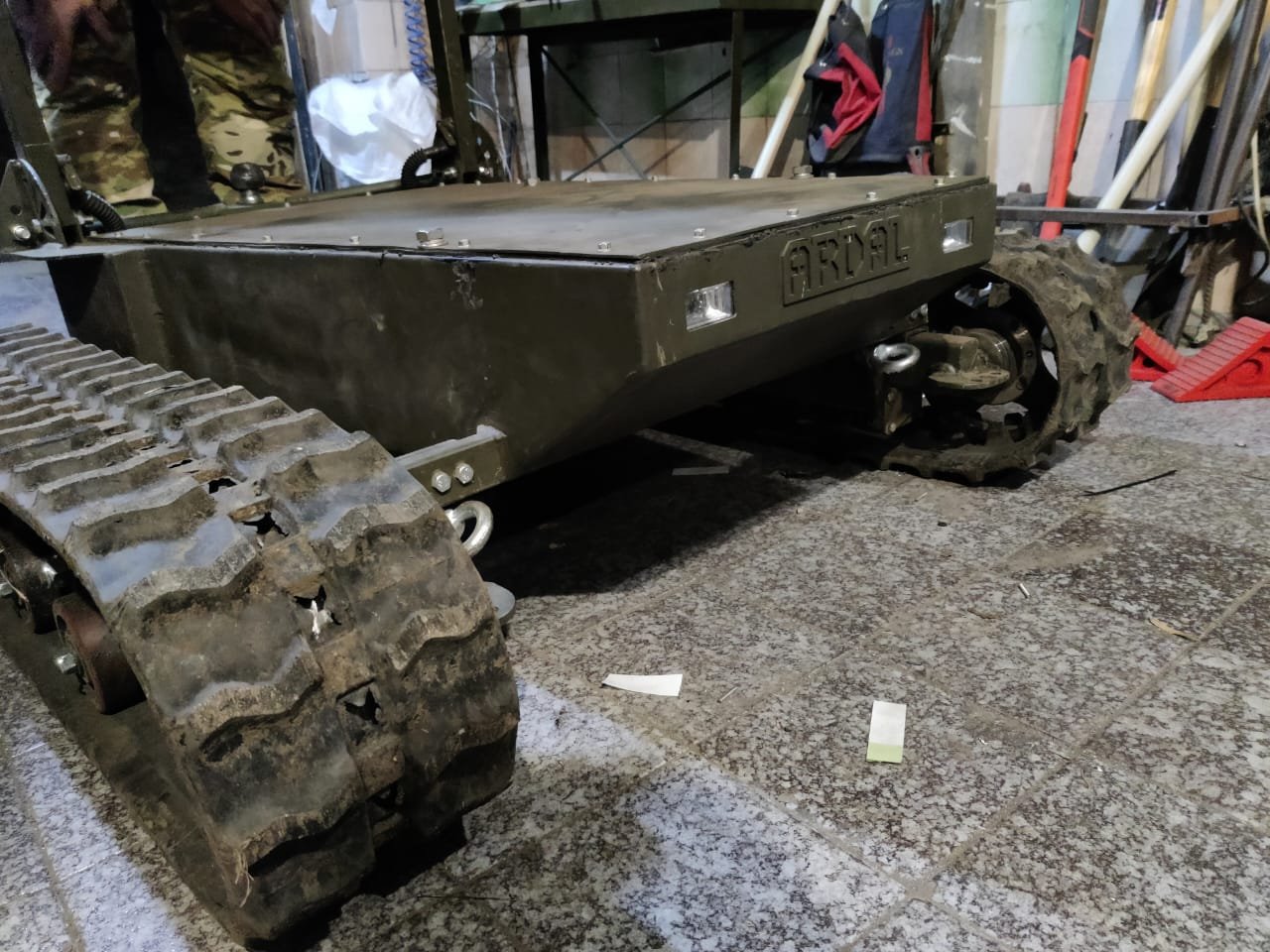An Ardal ground drone successfully evacuated three severely wounded Ukrainian soldiers who had been stranded for a month near Russian positions, Texty reports. The Ukrainian military and engineers conducted this unique rescue mission using a ground robotic complex when all other evacuation methods had failed.
In mid-March March, Kseniia Vynohradova, who previously served in the 154th Brigade, posted on Facebook seeking a ground drone to rescue three wounded soldiers who had been stranded at their position for three weeks.
Evacuation had been impossible due to ongoing fighting in that section of the front. Two of the three soldiers sustained severe injuries: one with gunshot shrapnel wounds to the head, and another with a serious limb injury that later became complicated by frostbite and decay. Unable to move long distances on their own, the soldiers could not be reached by conventional evacuation methods.
Within hours of the post, Viktor Dolhopiatov, director of the Burevii design bureau, commented:
"We need more information. We'll try."
Response
A team was quickly assembled and deployed to Kharkiv Oblast within days, bringing several ground drones. Another five days were spent on coordination, information gathering, and planning with the military from the involved brigades. The constantly changing situation required frequent route adjustments and close consideration of the wounded soldiers' condition, with the soldiers staying in contact throughout.
By the time of the operation, the wounded servicemen had spent a month in close proximity to Russian forces, enduring repeated drone attacks and chemical weapon strikes. They suffered from exhaustion, blood loss, and severe injuries. Throughout, their fellow soldiers maintained constant communication, delivering food, water, medicine, and spare radio batteries via drones.
The team pressed on despite losing their first drone to two anti-tank mines. Upon hearing of the drone's loss, the wounded soldiers radioed:
"We can't take it anymore. Just finish us off, or we'll crawl ourselves — the Russians will finish us off."
The successful operation
After days of near-total sleep deprivation, the team retrofitted a second drone and modified another trailer. This drone successfully reached the position and rescued the wounded soldiers. The operation lasted about four hours, with the drone, carrying the trailer, covering more than 17 kilometers across challenging terrain, including plains, steep hills, and slopes.
More than 50 people took part in the operation, using electronic warfare and reconnaissance equipment, aerial reconnaissance, and bomber drones. On the return journey, the drone was repeatedly targeted by drone-dropped munitions, as well as artillery and mortar fire.
Ardal
This evacuation is significant not only for saving three lives and sparing their families from grief, but also for demonstrating the potential of using ground robotic complexes for evacuation in extremely challenging conditions. Engineers from Burevii and military personnel from the 92nd Brigade are already analyzing the experience and will share their conclusions and recommendations with other manufacturers and military units.
The rescue operation utilized the Ardal drone, developed and manufactured by the Ukrainian design bureau BUREVII. The drone features a sealed body, spring-balancing suspension, cast reinforced track, and dynamic track tensioning. Its compact size allows for easy transportation in any European pickup truck, and it has a load capacity of 250 kilograms.
Read also
-
Ukraine unveils land drone with 10 m retractable mast for comms relay, EW
-
Forbes: Ukraine, Russia hunt “invisible” fiber-optic drones with microphones, infrared lasers
-
Four new ground drones cleared for Ukrainian army deployment to enhance logistics
-
Ukraine’s FPV “air defenses” slash Russian drone reconnaissance capabilities
-
Ukraine introduces new domestic drone Hromylo for military operations

